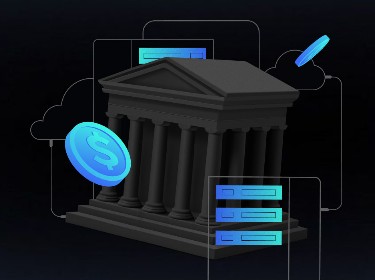It's no longer enough to simply sell products – retailers must understand their customers on a deeper level and use that knowledge to drive growth and profitability. Retail data analytics is the key to unlocking this potential.
In today’s fiercely competitive retail landscape, every click, swipe, and purchase tells a story, and retailers who can decipher that story are poised for success.
By leveraging data analytics, retailers can gain a crystal-clear understanding of their customers, optimize operations, and ultimately, boost their bottom line. Studies show the power of this approach: Mordor Intelligence found that the global big data analytics in retail market size was valued at $6,3 billion in 2024, and is projected to reach $16,7 billion by 2029.
These statistics paint a clear picture: data analytics isn’t just a fad, it’s a game-changer for retailers. But how do you unlock the power of your data? That’s where data analytics services and tools come in.
In this article we’ll help you explore the power of your data to gain a competitive edge and achieve your retail goals.
What is retail data analytics?
Retail data analytics is the process of harnessing and interpreting vast amounts of consumer information. It’s like having a crystal ball that can predict customer desires, optimize inventory, and even forecast future sales.
Imagine a store where shelves are always stocked with the right products, marketing campaigns hit their target audience with laser precision, and customer service is tailored to individual preferences. This is the power of retail data analytics in action. By analyzing everything from sales data to customer behavior, retailers can gain invaluable insights into what their customers want, when they want it, and how they want to buy it.
The true potential of retail data analytics lies in its ability to predict future trends. By analyzing historical data and identifying patterns, retailers can:
- Identify peak shopping times and optimize staffing levels accordingly
- Personalize recommendations and create targeted marketing campaigns
- Forecast demand, anticipate market shifts
- Make proactive decisions to stay ahead of the competition
- Identify a new customer segment that they can tap into with tailored products and services
What are the key types of retail data analytics?
![]()
Descriptive analytics: the foundation
At the foundation of retail analytics lies descriptive analytics. This type of analysis answers the fundamental questions of “what,” “when,” “where,” and “how many.” Think of it as a historical snapshot of a business’s performance. By examining past sales data, inventory levels, and customer behavior, retailers can identify trends, patterns, and anomalies.
Descriptive analytics might reveal that sales of a particular product are declining in a specific region. While this information is valuable, it doesn’t provide insights into the underlying causes or potential solutions.
Diagnostic analytics: digging deeper
To uncover the reasons behind trends and anomalies, retailers turn to diagnostic analytics. This method involves delving into data to identify the root causes of issues. By combining data from various sources, such as financial performance, operational metrics, and customer feedback, retailers can pinpoint the factors driving sales declines, inventory shortages, or customer dissatisfaction.
For example, diagnostic analytics might reveal that a decline in sales is due to a lack of product availability caused by supply chain disruptions. This information can then be used to implement corrective measures, such as diversifying suppliers or improving inventory management processes.
Predictive analytics: forecasting the future
While descriptive and diagnostic analytics focus on past and present data, predictive analytics looks ahead. By analyzing already existing patterns, retailers can forecast future trends and outcomes. This allows them to anticipate changes in consumer behavior, market conditions, and competitive landscapes.
For example, predictive analytics can help retailers predict demand for seasonal products, optimize inventory levels, and identify potential risks to the supply chain. By understanding future trends, retailers can make proactive decisions to capitalize on opportunities and mitigate risks.
Prescriptive analytics: making informed decisions
This advanced form of analysis leverages artificial intelligence and machine learning to not only predict future outcomes but also recommend specific actions to achieve desired results. Prescriptive analytics can suggest optimal pricing strategies, personalized marketing campaigns, and inventory management policies. By continuously analyzing real-time data, it enables businesses to rapidly adapt to changing conditions and fine-tune their strategies for maximum impact. This approach not only enhances decision-making but also helps companies stay ahead of competitors by proactively addressing potential challenges. An experienced AI development company can provide the expertise needed to implement these advanced analytics capabilities, ensuring that businesses fully leverage the power of AI for strategic growth.
Prescriptive analytics might recommend offering a specific discount on a product to boost sales during a slow period or suggest cross-selling opportunities based on customer purchase history. By automating decision-making processes, retailers can improve efficiency, reduce costs, and enhance customer satisfaction.
What are the benefits of retail data analytics?
![]()
Personalized shopping
One of the most significant benefits of retail analytics is the ability to create a personalized shopping experience. By analyzing customer data, retailers can tailor their offerings to individual preferences, from product recommendations to targeted marketing campaigns. For instance, a study by McKinsey found that personalized email marketing can increase open rates by up to 10% and click-through rates by up to 15%.
Optimized inventory and supply chain
Retail analytics enables retailers to accurately predict demand, ensuring that the right products are in the right place at the right time. This not only reduces the risk of stockouts and overstocks but also streamlines supply chains, leading to cost savings and improved efficiency. A McKinsey report reveals that companies using AI-driven predictive analytics can reduce forecasting errors by 20% to 50%, leading to inventory reductions of 20% to 30%. This is where data analytics services for the supply chain industry can be invaluable, providing insights into logistics, inventory management, and demand forecasting to optimize the entire supply chain.
Unleashed customer insights
Retail analytics provides invaluable insights into customer behavior, allowing retailers to understand their customers’ needs, preferences, and pain points. By analyzing customer data, retailers can identify new market opportunities, optimize product development, and improve customer service. For example, a retailer might discover that a particular product is frequently purchased alongside another, leading to targeted cross-selling opportunities. Big data consulting and data analytics services for the retail and eCommerce industry can help businesses leverage these insights to enhance customer segmentation, personalize marketing campaigns, and improve overall customer satisfaction.
Maximized ROI
In the age of digital marketing, retailers have a wealth of data at their fingertips. By analyzing customer data, retailers can create targeted marketing campaigns that resonate with their audience. This not only improves the effectiveness of marketing efforts but also helps to maximize return on investment.
Fraud prevention
Retail fraud is a significant problem, costing businesses billions of dollars each year. Analytics can help detect suspicious activity, such as unusual purchase patterns or fraudulent returns, allowing retailers to take preventative measures.
Improved customer loyalty
By understanding customer needs and providing personalized experiences, retailers can foster stronger relationships and increase customer loyalty. A loyal customer is more likely to make repeat purchases, refer friends, and become a brand advocate.
Explore the advantages of customer churn prediction software and learn how to develop one for your business
Optimized order delivery
Optimized order delivery ensures that products reach customers quickly, efficiently, and affordably. When customers receive their orders on time and in good condition, they are more likely to be satisfied with the overall shopping experience. Also, by streamlining the order fulfillment process, businesses can improve their overall efficiency and productivity.
For example, PixelPlex has recently implemented a multi-platform e-commerce solution that offers features like automated delivery route planning, real-time order tracking and order status management, all aimed at optimizing order delivery and enhancing customer satisfaction.
How to enable retail data analytics? Key use cases
![]()
Prioritize your customer
At the heart of successful retail analytics lies a deep understanding of the customer. Retailers must go beyond mere demographics and delve into the psyche of their shoppers. By leveraging customer data, retailers can create highly personalized experiences that resonate with individual preferences.
Consider the case of Amazon, which has perfected the art of product recommendations based on past purchases and browsing history. This level of personalization has not only increased customer satisfaction but has also fueled significant revenue growth.
Check out the key aspects of customer sentiment analysis and understand its importance for your business with our comprehensive blog guide
Visualize the data story
The saying “a picture is worth a thousand words” holds true in the realm of data analytics. Visualization tools, such as dashboards and interactive charts, can bring complex data to life, making it accessible to everyone from seasoned analysts to frontline employees. For example, people are 30% more likely to make payments faster when prompted by visuals.
Analyze different data sources
To uncover hidden insights, retailers must analyze multiple data sources. Beyond traditional sales data, consider incorporating information from social media, customer surveys, and market trends. This holistic approach can provide a more comprehensive view of the customer journey and identify emerging opportunities or challenges. For instance, a retailer might discover that a surge in online returns is correlated with a recent change in shipping policies.
Set the KPIs
Key Performance Indicators (KPIs) are the compass that guides a retailer’s journey toward success. By tracking metrics such as sales, customer satisfaction, and inventory turnover, retailers can measure their performance against specific goals.
However, it’s essential to ensure that KPIs are aligned with the overall business strategy. A well-defined set of KPIs can help identify areas for improvement, allocate resources effectively, and celebrate achievements.
Define your goals
In the face of overwhelming data, it’s crucial to prioritize goals and focus on what matters most. By identifying key objectives, retailers can allocate their resources, time, and energy accordingly. A common mistake is trying to tackle everything at once, which can lead to a lack of focus and diminished results.
Essential retail data analytics tools
With a myriad of tools available, navigating the data analytics landscape can feel like wandering through a labyrinth. Our team has made a list of essential but functional tools that will illuminate your retail journey.
Acumen
This powerful platform doesn’t just crunch numbers, it transforms data into actionable insights, helping you understand consumer sentiment, identify market trends, and outsmart your competitors. With a database of over 60,000 global respondents, Acumen offers a comprehensive view of the retail landscape.
Looker
Looker is a master storyteller, transforming raw data into captivating visuals that make complex insights easy to understand. From interactive dashboards to predictive analytics, Looker empowers you to uncover hidden patterns and make data-driven decisions. It’s like having a personal artist who can paint a beautiful picture of your business’s performance.
Sisense
In the age of artificial intelligence, Sisense is the retail industry’s AI guru. Its Fusion platform leverages machine learning to uncover trends and predict future outcomes. With Sisense, you can automate tasks, streamline processes, and gain a competitive edge.
Tableau
If you’re looking for a tool that can create stunning, interactive dashboards, Tableau is your go-to choice. With its drag-and-drop interface, even non-technical users can create visualizations that tell compelling stories. Tableau’s integration with Salesforce makes it a powerful tool for sales teams, allowing them to track performance, identify opportunities, and close more deals.
Microsoft Power BI
Microsoft Power BI is a versatile tool that can handle everything from basic reporting to advanced analytics. Its integration with the Microsoft ecosystem makes it a natural choice for businesses that already use Microsoft products. With Power BI, you can create custom dashboards, analyze sales trends, and even predict future demand.
Power BI vs Tableau: exploring the key differences between the two powerful analytics tools here
TIBCO Spotfire
For businesses that need advanced analytics capabilities, TIBCO Spotfire is a powerful choice. Its “hyper converged” architecture allows you to analyze large datasets quickly and efficiently. With Spotfire, you can explore historical data, analyze streaming data, and even perform geospatial analysis.
Qlik
Qlik is a business analytics platform that combines the power of AI with the simplicity of natural language search. With Qlik, you can ask questions in plain English and get instant answers. Its augmented analytics capabilities make it easy to uncover insights that you might have missed.
MicroStrategy
MicroStrategy is a comprehensive enterprise analytics platform that offers a wide range of features, from cloud-based analytics to mobile capabilities. Its HyperIntelligence technology allows you to access key metrics and insights directly from your applications.
NetSuite
If you’re looking for a tool that can handle everything from accounting to eCommerce, NetSuite is a great option. Its integrated suite of applications includes powerful analytics tools that can help you track key performance indicators, analyze sales trends, and optimize your operations. With NetSuite, you can get a complete view of your business and make data-driven decisions.
Elevate your business insights and strategy with our business intelligence services, encompassing development and consulting expertise
Getting started with retail data analytics with PixelPlex
As technology advances and data volumes grow, the potential applications of data analytics in the retail industry will continue to expand. Retailers who embrace data-driven decision-making will be well-positioned to thrive in the competitive and rapidly changing retail landscape.
Our approach to data analytics integration:
1. Data assessment: We begin by evaluating your existing data infrastructure and identifying opportunities for improvement.
2. Data cleaning and preparation: We clean, standardize, and prepare your data for analysis.
3. Data analysis: Our analysts use advanced techniques to uncover valuable insights, such as customer segmentation, trend analysis, and predictive modeling.
4. Visualization: We create clear and compelling visualizations to help you communicate your findings effectively.
5. Implementation: We assist you in integrating data-driven insights into your decision-making processes.
We’ll help your business get the most out of your data. PixelPlex will work with you to turn your data into an actionable strategy that drives business success – drop us a line today!




